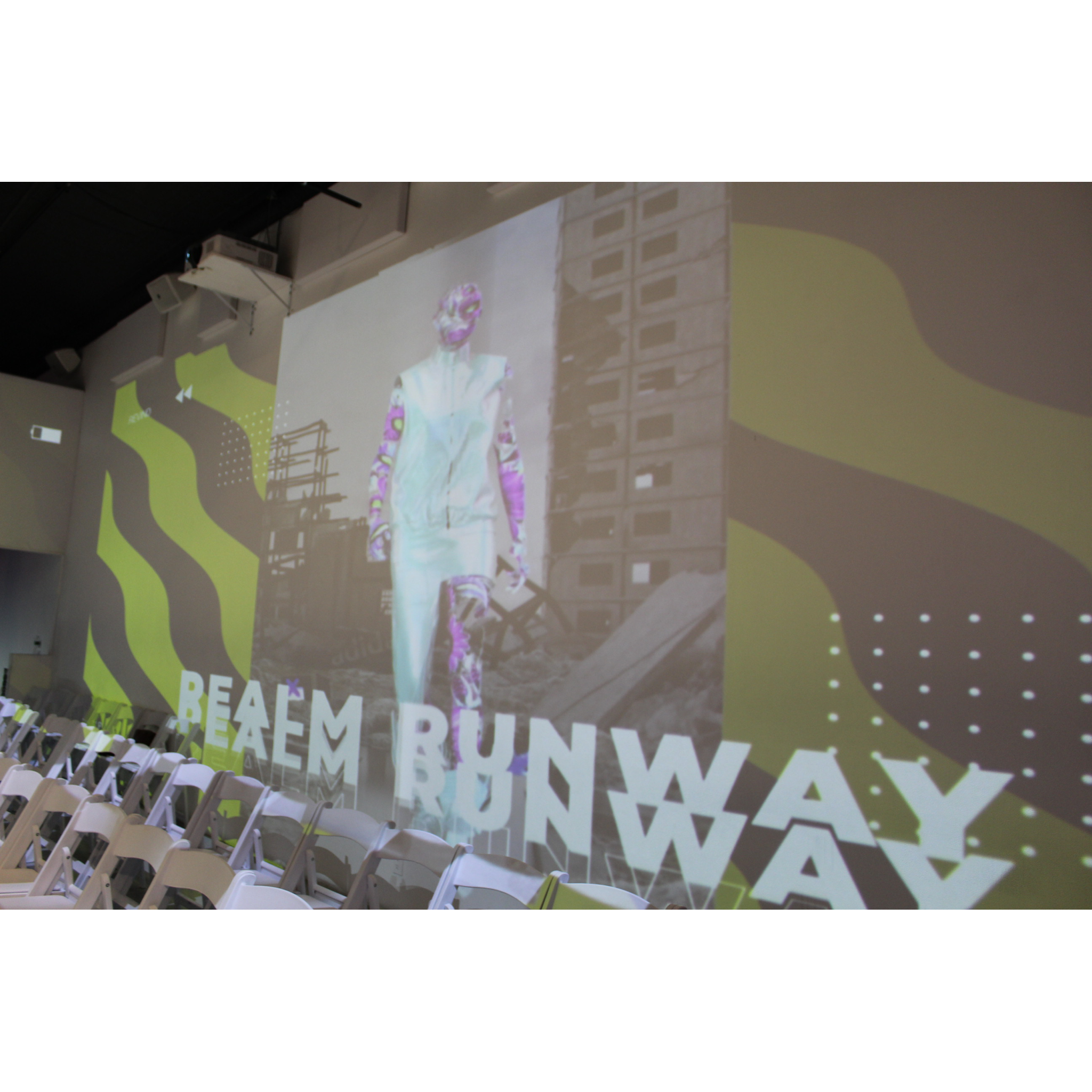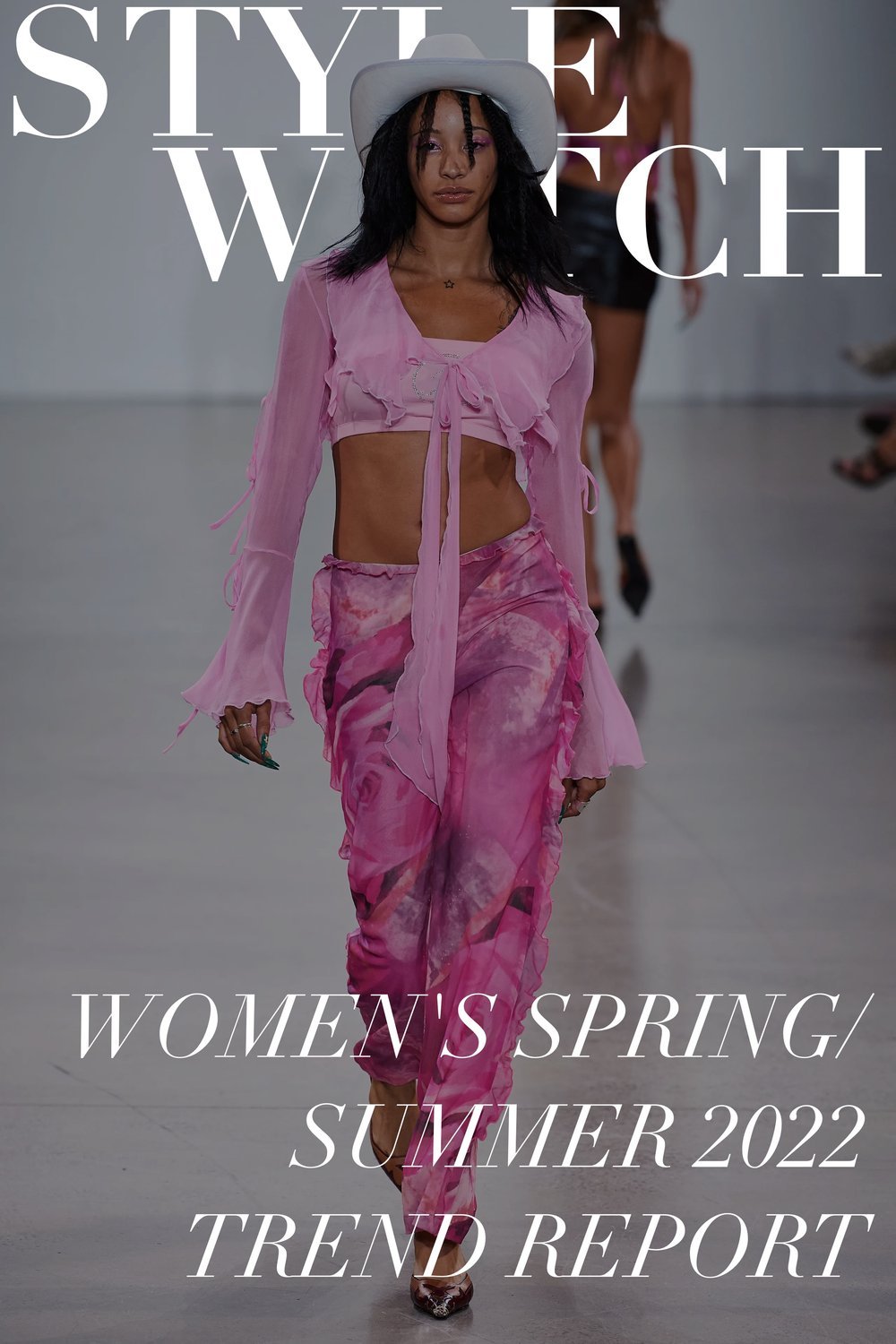Realm Runway: Are NFT's the Future of Fashion
In today’s digital landscape, we hear a lot about the so called metaverse, NFTs, and Web3- all seemingly a little too futuristic or complex to take the fashion industry by storm. Digitalax, a cutting edge platform founded by Emma Jane MacKinnon-Lee to help add value and utility to digital fashion, presented the first ever Web3 NFT Fashion Runway at Lume Studios on February 12th, 2022. Upon entering the space, it was apparent this would be like no runway seen before. The floor to ceiling projection imagery covered the walls with the animated creations. From digital fashion labels to mantras such as “progressively decentralized” refers to their core values. The attendees were clothed in a variety of different styles ranging from a laid back look; a crewneck and sneakers, to more experimental garments such as scarlet stacked trousers paired with a rich purple abstract patterned blazer. After speaking to several attendees, they all had different reasons for attending. One man seated with a floral bouquet was there to support his girlfriend, a model walking on the runway. Another woman said she discovered this event online through a Discord server, and was fascinated with the technology being used and pioneered here tonight. This is representative of the growing accessibility to these spaces. You no longer have to be added to a guest list through a mutual connection or work in the industry to attend these events or enter these spaces.
Photography: Isabella Dores
The show combined ‘phygital’ (physical + digital) mediums with over 40 Web3 fashion designers, 15 Web3 IRL fashion designers, and a combination of digital models and IRL models sourced through Global Models Syndicate. Global Models Syndicate (GMS) is not an agency but describes themselves as “a community and network dedicated for models exploring breakout looks and rising in prominence in Web3 fashion and the open metaverse.”
The IRL looks being shown on the runway ranged greatly in theme. Space age themed rave wear graced the runway by the brand Altered Egos, who create a dynamic approach to costuming. Looks reflecting African heritage were shown by Shiyenze, a Kenyan designer based in New York utilizing fabrics to convey stories authentic to their background. A standout designer was Pedro Juan who paired his dazzling dresses with elaborate embellished face coverings, taking an otherwise daring collection and elevated it to a more futuristic avant garde presentation. The digital looks were far more experimental and showstopping given the endless capabilities of these softwares. Designer Meryin3D showcased a flowing garment coined the Jigglypuff dress, described as being inspired by the “blooming of flower and mixed with jigglypuff '' according to the NFT listing. With digital softwares and upcoming technology, the limit for creativity and innovation within these platforms are endless. The experience of viewing a physical runway while being able to glance up and see a fully digitized scene was an entirely immersive experience.
Realm Runway was the first event to showcase this Web3 NFT approach where all of the components such as the fashion and models, both digital and physical were launched as NFTs- a big step for these creators to be able to showcase and profit off of their work. As Web3 continues to progress as the next phase of the Internet, the metaverse is surely to grow in popularity amongst everyday users. The metaverse is the concept of an entirely digital realm, which is not owned by a singular entity. There is a focus on making digital fashion transferable from across different platforms to dress player’s avatars in these different spaces. Digitalax is almost a “one stop shop” approach to help designers, players, and prospects alike to accomplish their goals in the space through providing education and resources further assisting the individuals to help them best succeed in this landscape.
Photography: Isabella Dores
I had the chance to speak with the founder of Digitalax: Web3 Fashion Economy, Emma-Jane MacKinnonLee. Her background is impressive, co-founding the first crypto tail risk hedge fund and was appointed by the Dubai government to lead the Dubai Foresight Initiative 2020. In September of 2020, Digitalax was created.
How would you best describe this hybrid approach to a fashion show?
I would say it’s just the natural iteration of where we’re going. If you just look at every space that you walk through every day, there is this layer of immersivity to everything. Whether it's a 2D flatscreen like your computer or phone, or its something like projection mapping, or hybrid in between. This digital immersivity or this interaction layer is on absolutely every device, surface, room, whatever you want to call it. That's been there for the last decade, and just progressing- so it makes sense that it would come into fashion, and it makes so much more sense now with NFT’s and Web3 and this narrative of the metaverse becoming much stronger. Having a fashion show that is just purely physical IRL, you’re losing a lot of value, you’re missing out on including this entire new world that we’re moving into.
Despite digitalax being a pioneer in this industry, web3 is evolving and progressing so quickly, how do you intend to anticipate keeping up with this environment?
The first thing is really understanding the industry that we’re building and you hear a lot of people in web3 and NFT’s who have no idea what they're talking about. Literally almost everyone that I meet who says they're an expert in NFT’s, you ask them one question and they have no idea. So the first thing is just really understanding the industry that you’re in because that gives you such an advantage. And for myself, if I'm spearheading a revolution where I want to bring other designers in, if I’m guiding them down a dodgy path- I can't live with that blood on my hands. So the first thing is really understanding it, believing in it in full conviction. I fully believe in everything about web3, which at its core is self sovereignty and freedom, so just making sure that in anything that I do, that's the center of it and then going from there.
In what ways would you say that digital fashion is more accessible in some ways than the traditional fashion industry model we follow now?
It’s a lot more accessible for designers. If you want to start an in real life fashion brand, you need a lot of capital up front. You’ve got to buy materials, you’ve got to go and work with a
factory, you’ve got to get that in a store somewhere or need a place to store your materials if you’re in ecommerce, but with digital you literally just need a laptop and access to YouTube and Twitter or be able to promote your stuff and then learn the different softwares so it’s super accessible on that front. And with NFT’s now you can sell that directly to the market and get a capital, so it’s way better than the traditional industry which is all about who you know, and if you don't have a million dollars when you were born than you’re pretty much [screwed] f**ked.
What are some words of advice you can give to current fashion students trying to learn more or break into the space?
Type in Digitalax.xyz and join our Discord, or follow us on Twitter and DM. I usually always reply and I will guide you directly step by step of how you launch an NFT and how you set up a web3 fashion label. At digitalax we don’t ask you for any money up front, we give you all the engineering, infrastructure, buyers,and community that you need to get into this space and be really successful.
Article by Alessa Hatch, Contributor, PhotoBook Magazine
Tearsheets by Alexa Dyer, Graphic Design Intern, PhotoBook Magazine






